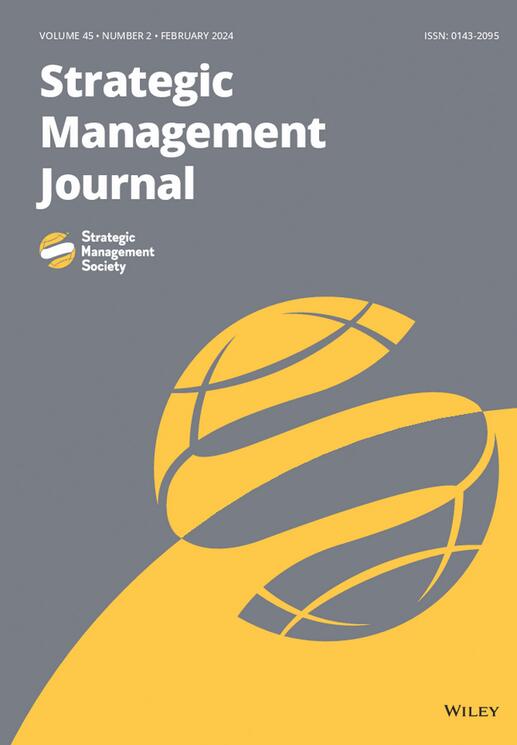Curating 1000 flowers as they bloom: Leveraging pluralistic initiatives to diffuse social innovations
IF 6.5
1区 管理学
Q1 BUSINESS
引用次数: 0
Abstract
Social and environmental challenges in our society offer opportunities for innovation. Having a strong mission can enhance both opportunity recognition and strategic alignment; however, aligning strategy and mission can be challenging when an organization pursues its social mission in pluralistic ways. How can mission‐driven organizations manage pluralistic local initiatives while cohering to their missions? Using an inductive field study, I trace how Slow Money, an organization fostering sustainable local food systems by connecting food entrepreneurs with local investors, translated its core mission into different mission‐oriented local initiatives. I find that mission‐oriented local initiatives were recombined to create novel strategies curated and diffused by the central leadership, and I show how, rather than derail an organization's mission, pluralistic local initiatives can foster strategies for social innovation.Organizations addressing social and environmental challenges often are mission driven. Though a mission can help guide strategy decisions, it also can lead to strategy confusion, especially when an organization consists of many local groups with different interpretations of the mission. I use the case of Slow Money, a nonprofit supporting sustainable local food systems, to understand how an organization can transform an assortment of mission‐based strategies into an asset rather than a liability. I find that by promoting an open exchange of local initiatives and strategies, Slow Money's central leadership validated strategy diversity. It also provided its local groups with the opportunity to borrow and repurpose other groups' initiatives. In this way, diverse local strategies created mission unity while also increasing organizational social innovation.1000朵鲜花的绽放:利用多元化倡议推广社会创新
社会和环境挑战为创新提供了机遇。拥有强有力的使命感既能增强对机遇的认识,也能提高战略一致性;然而,当一个组织以多元化的方式追求其社会使命时,战略与使命的一致性可能会面临挑战。使命驱动型组织如何管理多元化的地方倡议,同时又能与使命保持一致?通过归纳式实地研究,我追踪了 "慢钱"(一个通过将食品企业家与当地投资者联系起来来促进可持续当地食品体系发展的组织)如何将其核心使命转化为不同的使命导向型地方倡议。我发现,以使命为导向的地方倡议被重新组合,以创造由中央领导层策划和传播的新战略,我还展示了多元化的地方倡议是如何促进社会创新战略的,而不是破坏一个组织的使命。尽管使命有助于指导战略决策,但也可能导致战略混乱,尤其是当一个组织由许多对使命有不同理解的地方团体组成时。我以支持可持续地方食品系统的非营利组织 "慢钱"(Slow Money)为例,了解一个组织如何将各种基于使命的战略转化为资产而非负债。我发现,通过促进地方倡议和战略的公开交流,"慢钱 "的中央领导层验证了战略的多样性。它还为地方团体提供了借鉴和重新利用其他团体倡议的机会。通过这种方式,多样化的地方战略创造了使命的统一性,同时也增加了组织的社会创新。
本文章由计算机程序翻译,如有差异,请以英文原文为准。
求助全文
约1分钟内获得全文
求助全文
来源期刊

Strategic Management Journal
Multiple-
CiteScore
13.70
自引率
8.40%
发文量
109
期刊介绍:
At the Strategic Management Journal, we are committed to publishing top-tier research that addresses key questions in the field of strategic management and captivates scholars in this area. Our publication welcomes manuscripts covering a wide range of topics, perspectives, and research methodologies. As a result, our editorial decisions truly embrace the diversity inherent in the field.
文献相关原料
| 公司名称 | 产品信息 | 采购帮参考价格 |
|---|
 求助内容:
求助内容: 应助结果提醒方式:
应助结果提醒方式:


